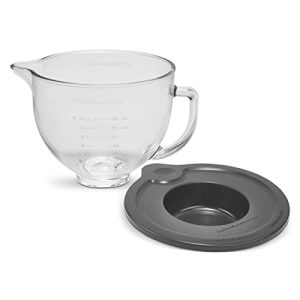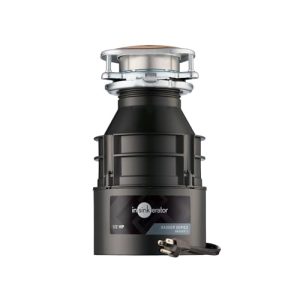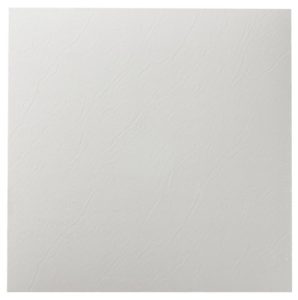If you’ve noticed spots or streaks on your dishes after a wash, adding rinse aid to your Kitchen Aid dishwasher can make a big difference. You might wonder how to do it quickly and correctly so your dishes come out sparkling every time.
In this guide, you’ll learn exactly where and how to add rinse aid to your dishwasher. Keep reading to get your dishwasher working at its best and enjoy cleaner, shinier dishes without any hassle.
Locate The Rinse Aid Dispenser
Knowing where to find the rinse aid dispenser in your KitchenAid dishwasher is the first step to improving your dishwashing results. This small compartment plays a big role in preventing spots and streaks on your glasses and dishes. Finding it is easier than you might think, but it’s important to be sure you’re looking in the right place to avoid any confusion.
Check Inside The Door Panel
The rinse aid dispenser is usually located on the inside of the dishwasher door. Open your dishwasher fully and look closely at the door’s interior surface. It’s often near the detergent dispenser but has a separate lid or cap that can be opened.
Many KitchenAid models have a round or square cap labeled with a small icon resembling water drops or a rinse aid symbol. If you see a small circular cap near the detergent compartment, that’s a strong clue you found the right spot.
Look For A Clear Or Colored Cap
The rinse aid dispenser often has a distinct cap—either clear, blue, or another bright color—to make it easy to spot. This contrasts with the usually white or gray dishwasher interior. If you see a colored cap, try twisting it open gently to confirm it’s the rinse aid reservoir.
Remember, the cap should open smoothly without force. If it feels stuck or doesn’t look like it would hold liquid, double-check you’re not mistaking it for another part like a filter or soap dispenser.
Consult Your User Manual Or Model Guide
If you’re still unsure, your best bet is to check the user manual that came with your KitchenAid dishwasher. It will have diagrams showing the exact location of the rinse aid dispenser. You can often find manuals online if you’ve misplaced the physical copy.
Knowing the model number of your dishwasher helps here. You can usually find it around the door frame or on the edge of the door. Having this number ready makes searching the manufacturer’s website much faster and more precise.
Choose The Right Rinse Aid
Choosing the right rinse aid for your KitchenAid dishwasher is crucial for achieving spotless, streak-free dishes every time. Not all rinse aids work the same, and selecting one that matches your water type and dishwasher model can make a significant difference. Have you ever wondered why your glasses still come out cloudy despite using a rinse aid? The answer might lie in picking the right product.
Understanding Your Water Type
Water hardness affects how well your rinse aid works. Hard water contains minerals that can leave spots and film on dishes. If you live in an area with hard water, opt for a rinse aid designed to combat mineral buildup.
Soft water users might not need a strong formula. Using a high-concentration rinse aid in soft water can lead to excessive suds or residue. Checking your local water report can guide you to the best rinse aid choice.
Compatibility With Kitchenaid Dishwashers
Not every rinse aid is suitable for all dishwasher brands. KitchenAid dishwashers often recommend specific rinse aids that optimize performance and protect your appliance. Using an incompatible rinse aid might cause leaks or damage to the dispenser.
Refer to your KitchenAid dishwasher manual for product recommendations. Some rinse aids are specially formulated to work with the machine’s sensor and cycle settings, ensuring perfect drying and shining results.
Choosing Between Liquid And Tablet Rinse Aids
Rinse aids come in liquid and tablet forms. Liquid rinse aids allow you to control the amount you add, which can be useful if your water hardness changes seasonally. Tablets often combine detergent and rinse aid, simplifying the process but offering less control.
Think about your convenience and cleaning needs. If you prefer a set-it-and-forget-it approach, tablets might appeal to you. However, if you like tweaking your dishwasher settings for optimal results, liquid rinse aids offer more flexibility.
Considering Environmental Impact
Eco-friendly rinse aids are becoming more popular. These products use biodegradable ingredients and avoid harsh chemicals, making them safer for your family and the environment. Choosing a green rinse aid can reduce your household’s ecological footprint.
Ask yourself: do you want your cleaning routine to be as sustainable as possible? Many natural rinse aids perform well without compromising dish quality. Checking for certifications like EPA Safer Choice can help you find trustworthy options.
Open The Dispenser Cap
Opening the dispenser cap is the first step to adding rinse aid in a Kitchen Aid dishwasher. This part holds the rinse aid liquid that helps dishes dry without spots. Knowing how to open it correctly ensures you pour the rinse aid safely and avoid spills.
The dispenser is usually located on the inside of the dishwasher door. It has a small cap designed to keep the rinse aid sealed. Opening this cap carefully is important to keep the rinse aid from leaking out.
Open the dishwasher door fully. Look for the rinse aid compartment, often near the detergent dispenser. It is a small, round or square cap with a twist or flip design.
Clean The Area Around The Cap
Wipe any dirt or moisture around the dispenser cap. This prevents dirt from entering the rinse aid compartment. Use a dry cloth for this task.
Open The Cap Carefully
- Twist the cap counterclockwise if it has a screw design.
- Lift the cap gently if it has a flip-top style.
- Do not force the cap open to avoid breaking it.
Check The Rinse Aid Level
After opening, look inside the dispenser to check the liquid level. Some models have a visible window or indicator. Refill if the level is low.
Pour Rinse Aid Correctly
Open the rinse aid compartment inside your KitchenAid dishwasher door. Pour the rinse aid slowly until the indicator shows it is full. Close the compartment tightly to prevent spills and ensure better drying results.
Adding rinse aid to your KitchenAid dishwasher can make a world of difference in how your dishes come out. No one likes those pesky water spots on glassware or the dull look on plates. By learning how to pour rinse aid correctly, you can ensure sparkling clean results every time. Here’s how to do it right.Open The Rinse Aid Dispenser
Locate the rinse aid dispenser inside your dishwasher door. It’s usually near the detergent compartment. Twist or flip the cap open carefully. Keep a towel handy for any unexpected spills.Check The Fill Line
Before pouring, take a moment to check the fill line inside the dispenser. This line indicates the maximum amount of rinse aid you should add. Overfilling can cause leaks, so stay within this limit.Pour The Rinse Aid
Using a steady hand, pour the rinse aid into the dispenser. The small opening might seem tricky, but go slow and you’ll nail it. Some users find using a small funnel helps prevent spills.Secure The Cap
Once filled, make sure to securely close the cap of the dispenser. A tight seal prevents the rinse aid from evaporating or spilling. Double-check it before closing the dishwasher door.Adjust The Rinse Aid Settings
Every dishwasher is different, and KitchenAid models often come with settings to adjust the amount of rinse aid released per cycle. Check your manual to tweak these settings according to your needs. It can make a big difference in the shine of your dishes.Monitor Usage
After a few washes, take a peek at the rinse aid level. Regular checks ensure you’re never caught off guard with an empty dispenser. It also helps in maintaining the ideal shine and cleanliness of your dishes. Have you ever noticed how different cycles affect the rinse aid usage? Understanding this can optimize your dishwasher’s performance. Adjusting these small details can lead to sparkling results and a hassle-free dishwashing experience.Close And Secure The Cap
Closing and securing the rinse aid cap properly is a crucial step in maintaining your KitchenAid dishwasher’s performance. A loose or improperly sealed cap can cause leaks, wasting rinse aid and potentially damaging your appliance. Taking a moment to ensure the cap is firmly closed protects your dishwasher and guarantees optimal rinsing results.
Check The Cap Alignment Before Closing
Make sure the rinse aid compartment is clean and dry before you close the cap. If you notice any residue or buildup, wipe it off gently. Proper alignment helps the cap fit snugly and prevents spills.
Twist The Cap Until You Feel Resistance
Turn the cap clockwise until you feel it tighten firmly. Avoid over-tightening, which can damage the threads or make it difficult to open next time. A secure twist keeps the rinse aid inside and avoids leaks during the wash cycle.
Listen For A Click Or Notice The Fit
Many KitchenAid models have a cap that clicks when fully secured. If yours does, listen carefully for this sound. If not, visually check that the cap sits flush with the compartment, with no gaps or wobbling.
Wipe Away Any Spills Immediately
If any rinse aid spills during the process, clean it up right away with a damp cloth. Spills can cause slippery surfaces or even damage the dishwasher’s interior if left unattended. Keeping the area clean ensures safety and appliance longevity.
Test The Cap After Closing
Gently press on the cap to confirm it doesn’t move or come loose. If it feels loose, open and re-close it carefully. This quick test helps prevent issues during the next wash cycle.
Adjust Rinse Aid Settings
Adjusting the rinse aid settings on your Kitchen Aid dishwasher can make a significant difference in how your dishes come out after each cycle. Rinse aid helps to reduce water spots and improves drying, but using too much or too little can affect results. Knowing how to fine-tune these settings ensures you get the best performance tailored to your water hardness and dishwashing habits.
Locate The Rinse Aid Dispenser Control
Start by finding the rinse aid dispenser control inside your dishwasher door. It’s usually near the rinse aid compartment and often looks like a small dial or slider. If you’ve never adjusted it before, this might be a new discovery that can change your dishwashing game.
Understand The Setting Levels
The rinse aid dispenser typically has numbered levels, ranging from 1 to 6 or sometimes 1 to 8. Lower numbers release less rinse aid, while higher numbers dispense more. If your dishes often have spots or water marks, increasing the setting could help. On the other hand, if you notice a sticky residue, try lowering it.
Adjust Based On Water Hardness
Water hardness plays a big role in rinse aid effectiveness. Hard water leaves more mineral deposits on your dishes, so you may need to increase the rinse aid level. Soft water requires less rinse aid, so a lower setting can prevent overuse and waste. You can check your water hardness through a simple test kit or ask your water supplier for details.
Test And Fine-tune Settings
After adjusting, run a few cycles to observe the results. Pay attention to spots, streaks, and drying performance. If you don’t see an improvement, tweak the settings up or down by one level at a time. This trial and error approach helps you find the perfect balance for your dishwasher.
Keep Track Of Your Adjustments
It’s easy to forget which setting works best once you start changing them. Write down your rinse aid level and any notes about water quality or dish results. This simple habit saves you time and frustration in the long run.
Troubleshoot Common Issues
Troubleshooting common issues with adding rinse aid to your KitchenAid dishwasher saves time and frustration. Problems like dispenser not opening or cloudy dishes happen often. Knowing simple fixes helps keep your dishwasher working well.
Check the rinse aid dispenser regularly. Dirt or buildup can block it. Clean the dispenser with warm water and a soft cloth to ensure smooth operation. Avoid using harsh chemicals that may damage the dispenser.
Use the correct type and amount of rinse aid. Too little rinse aid causes spots, while too much leaves residue. Follow the dishwasher manual for the right amount. Adjust the dispenser setting if needed.
Inspect the rinse aid cap. A loose or damaged cap can cause leaks or prevent the dispenser from opening. Tighten the cap firmly or replace it if broken. Proper sealing keeps the rinse aid fresh and contained.
Check the dishwasher cycle. Some cycles may not release rinse aid properly. Select a cycle that includes a rinse aid release step for best results. Refer to the user guide for cycle details.
Rinse Aid Dispenser Won’t Open
- Clean the dispenser door and hinge area.
- Check for stuck debris or dried rinse aid.
- Ensure the cap is tightened correctly.
- Test the dispenser mechanism manually if possible.
Cloudy Or Spotty Dishes After Wash
- Increase the rinse aid dosage setting.
- Use a high-quality rinse aid product.
- Make sure the rinse aid is not expired.
- Check water hardness; adjust settings accordingly.
Rinse Aid Leaking Inside Dishwasher
- Inspect the dispenser cap for cracks or damage.
- Replace the cap if it does not seal well.
- Do not overfill the rinse aid compartment.
- Wipe off excess rinse aid around the dispenser.
Tips For Maintaining Rinse Aid Levels
Keeping the rinse aid at the right level in your Kitchen Aid dishwasher makes a big difference in how spotless your dishes come out. Too little rinse aid, and you’ll notice spots or film on your glasses. Too much can cause excess suds or even damage the dishwasher over time.
Understanding how to maintain the rinse aid properly saves you time and keeps your dishwasher running smoothly. Let’s look at some practical tips that will help you keep your rinse aid levels just right.
Check The Rinse Aid Indicator Regularly
Most Kitchen Aid dishwashers have a rinse aid indicator light or window. Make it a habit to check this before every wash cycle. If you ignore it, you might run out of rinse aid and end up with dull, spotted dishes.
Think about how often you use your dishwasher. If it’s daily, checking weekly might be best. For less frequent use, monthly checks could work.
Refill With The Correct Amount
Pour rinse aid slowly into the dispenser until it reaches the fill line. Overfilling can spill rinse aid into the dishwasher, causing foam buildup and leaks. Underfilling means your dishes won’t get the shine they deserve.
Use a funnel or a rinse aid bottle with a narrow tip to avoid messes. This small step can save you from unnecessary cleanup.
Adjust The Rinse Aid Dispenser Setting
Kitchen Aid dishwashers allow you to adjust the amount of rinse aid released per cycle. Check your manual for how to set this. If you notice streaks or spots, try increasing the setting slightly.
Conversely, if you see residue or suds, reduce the amount. Experimenting with this setting helps you find the perfect balance for your water hardness and detergent type.
Use The Right Type Of Rinse Aid
Not all rinse aids are created equal. Use a product recommended for your dishwasher model or with ingredients that suit your water quality. Some rinse aids are designed for hard water, while others work better with soft water.
Choosing the right rinse aid can prevent buildup inside your dishwasher and improve drying performance. Have you ever switched brands and noticed a difference? That’s your water and detergent chemistry at work.
Clean The Rinse Aid Dispenser Occasionally
Over time, the dispenser can get clogged with residue or old rinse aid. Wipe it clean every few months to ensure smooth dispensing. A blocked dispenser means your dishwasher won’t release rinse aid properly, affecting drying quality.
Removing the dispenser cover and rinsing it under warm water usually does the trick. This simple maintenance task keeps your dishwasher performing at its best.
Frequently Asked Questions
How Do I Add Rinse Aid To A Kitchenaid Dishwasher?
Open the rinse aid dispenser located inside the dishwasher door. Pour rinse aid into the dispenser until full. Close the cap securely. This helps reduce water spots and improves drying performance.
When Should I Refill Rinse Aid In My Dishwasher?
Refill rinse aid when the indicator light turns on or every 1-2 months. Frequent use may require more regular refills to maintain optimal cleaning and drying.
Can I Use Any Rinse Aid In Kitchenaid Dishwashers?
It’s best to use dishwasher-specific rinse aids for KitchenAid models. Avoid using fabric softeners or household liquids as they can damage the machine.
What Happens If I Don’t Use Rinse Aid?
Without rinse aid, dishes may have water spots and poor drying. It can also cause residue build-up inside the dishwasher, affecting cleaning efficiency.
Conclusion
Adding rinse aid to your Kitchen Aid dishwasher keeps dishes sparkling clean. It helps remove water spots and speeds drying time. Always check the rinse aid level before running a cycle. Filling the dispenser is quick and easy. Regular use improves dishwasher performance and saves effort.
Now, your dishes can look their best every time. Keep the rinse aid filled for great results. Simple steps, better cleaning.

Sophie Hartwell is the founder of KitchenQuik.com, where she shares kitchen tips, smart cooking hacks, and the best product picks to make everyday cooking easier and more enjoyable.




